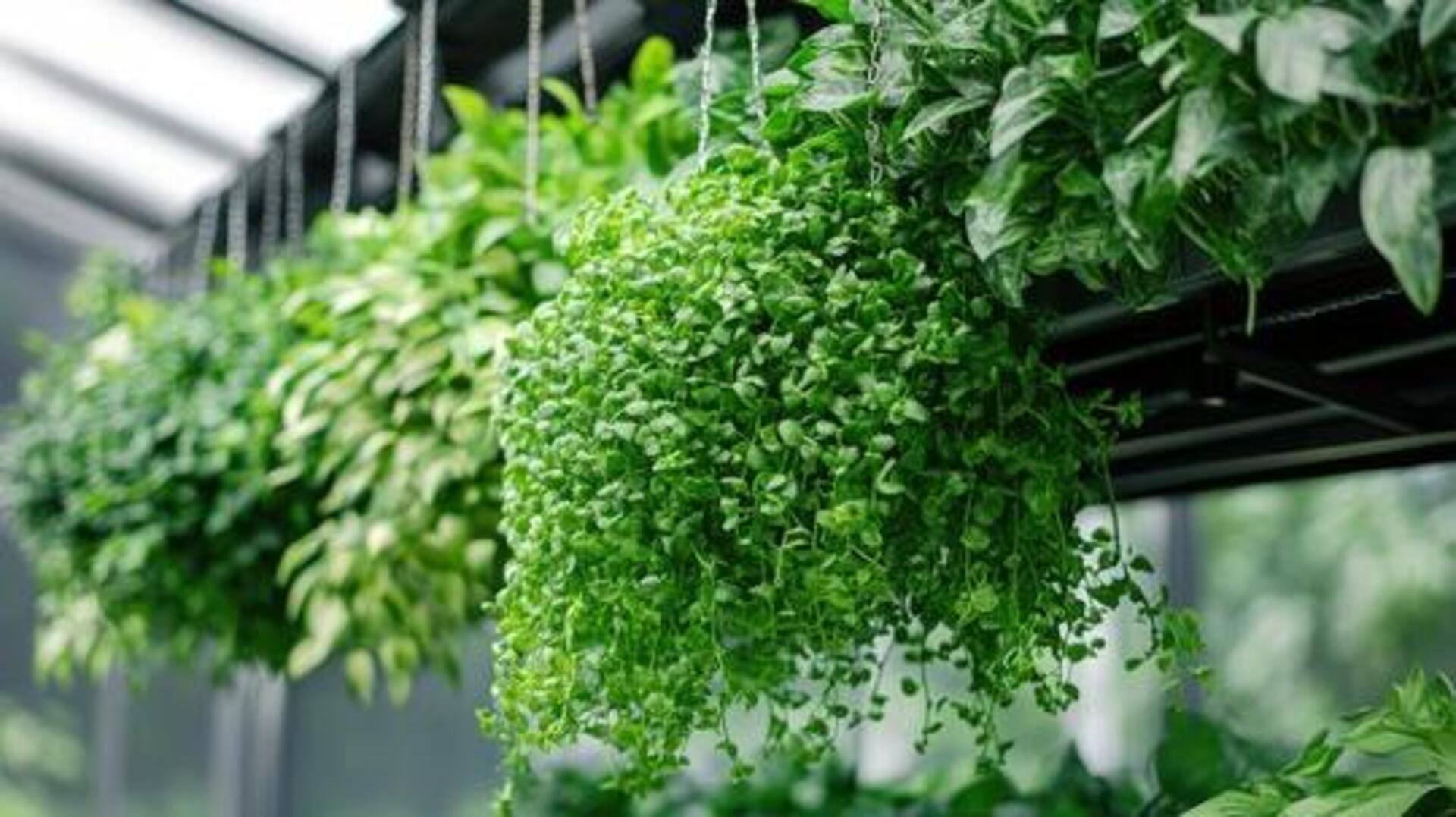
How to care for hanging plants
What's the story
Hanging plants can be a great way to add greenery to your home, but they need some specific care to thrive. Knowing the light, water, humidity, and temperature requirements of your hanging plants will help you keep them healthy and vibrant. Here are five practical tips to help you care for your hanging plants, ensuring they flourish in their elevated homes.
Tip 1
Choose the right light conditions
Light is essential for plant growth. Most hanging plants love bright, indirect sunlight. Keep them near windows where they can soak up natural light without getting scorched. Some plants may thrive in low-light conditions, while others may need more light. Research the particular needs of your plant species to find the right lighting conditions.
Tip 2
Water wisely and consistently
Watering is key to keeping your hanging plants healthy. Overwatering can lead to root rot, while underwatering may cause wilting. Check the soil moisture by sticking your finger an inch deep into the soil; if it's dry, it's time to water. Use room temperature water and make sure excess water drains out of the pot to avoid soggy roots.
Tip 3
Maintain optimal humidity levels
Many hanging plants come from tropical regions and prefer higher humidity levels than what is usually found indoors. To keep humidity levels up, you can mist your plants regularly or keep a humidifier nearby. Alternatively, placing a tray of water near your plants or grouping them together can create a microclimate with higher humidity.
Tip 4
Monitor temperature fluctuations
Temperature plays an important role in plant health. Most hanging plants do well in temperatures between 15 degrees Celsius and 27 degrees Celsius (59 degrees Fahrenheit and 80 degrees Fahrenheit). Keep them away from drafts, heating vents, or air conditioning units that could cause sudden temperature changes.
Tip 5
Fertilize appropriately for growth
Fertilizing is important to provide essential nutrients that support growth and health of hanging plants. Use a balanced liquid fertilizer every four weeks during the growing season (spring and summer). Follow package instructions carefully to avoid over-fertilization, which could damage roots or leaves.